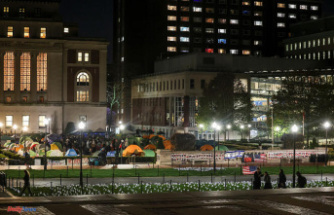When he was nine years old, his father made him swear an oath: he would never be kind to the Romans. At least that's how the Romans declared the Second Punic War (218-201), in which the Carthaginian Hannibal (ca. 247-183) almost drove them to their downfall. That was historical falsification by the victor, because there is much to suggest that Rome started the conflict coldly. Not hate, but the mixture of strategic calculation and military genius made Hannibal the most dangerous opponent of the Tiber city.
As a result of their defeat in the First Punic War (264-241), Carthage had to give up Sicily and Sardinia and lost naval supremacy in the western Mediterranean along with most of its fleet. To compensate, Hannibal's father Hamilkar Barkas had established a new colonial empire in the Iberian Peninsula, which his brother-in-law Hasdrubal consolidated after his death. Though formally controlled by Carthage, the Barcid family made the decisions locally. Therefore, after Hasdrubal's assassination, Hannibal took over in 221 BC. the command.
When the port city of Sagunto (near Valencia) refused to submit, he began the siege. In doing so, he gave the Romans a reasonable ground for war by pointing to an alliance with the city. In fact, a few years earlier Rome had recognized the Ebro as the border between the mutual spheres of influence, which exposes the intervention as a Machiavellian act. In fact, "the Romans could not present any reason that could stand up to the norms of international law," writes ancient historian Werner Huss. They were concerned with presenting the desired decisive battle for power as a "just war".
However, they hadn't expected Hannibal's reaction. After he had conquered Sagunto, he marched through Gaul with his army overland, crossed the Alps – according to new finds probably via the Col de la Traversette – and appeared in late autumn 218 BC. BC unexpectedly in Italy. If Rome's generals thought they had an easy time with the invaders, he soon taught them otherwise. In three battles - on the Ticinus, on the Trebia (both 218 BC) and on Lake Trasimeno (217 BC) - he defeated or destroyed numerically superior Roman armies.
The consuls of 216 BC BC, Lucius Aemilius Paullus and Gaius Terentius Varro were warned. They did not get bogged down in individual actions, but relied entirely on the backbone of Roman military power. That was the Italian military community. Although Rome had conquered the Apennine peninsula, the elites of the subjugated were tied to it by sharing in further profits in return for military success. Therefore, the Romans could mobilize up to 600,000 soldiers, while Carthage had to wage its wars with expensive mercenary armies that could not be easily replaced.
With eight legions and auxiliary troops, a total of 80,000 men, the consuls wanted to literally crush Hannibal's ragtag army. He had taken up position near the city of Cannae in Apulia and had the Romans come. That offered a great advantage. For since they were approaching from the north, they would be blinded by the sun in battle.
At most, Hannibal had 40,000 soldiers at his disposal, of which the Celtic warriors he had recruited in northern Italy were only lightly armed and significantly outnumbered by the armored legionnaires. But the Numidian and Iberian cavalry clearly outnumbered and outnumbered the Roman cavalry, and the heavily armed African mercenaries could easily compete with the Romans.
The battle was described by the Greek historian Polybius, experienced in warfare and a member of Rome's ruling circle two generations later. After that, Hannibal had his Celts form a crescent-shaped front in the center. The Numidians joined them on either side. The cavalry lined up on the flanks.
"The Romans . . . easily broke through the enemy's order of battle, since the Celts were only slightly deployed," writes Polybius. However, their formation enabled the Celts to retreat while preserving the line. Since the Romans "had pressed in from the flanks towards the center and to the place of battle in a dense mass", the Numidians got on the flanks of the Romans.
At the same time, the light Iberian horsemen on the left wing were able to route their Roman opponents. The Iberians then made a long-range move in the rear of the legions and, in conjunction with the African cavalry, drove Rome's allies out of the field. Then the cavalry parted. While the light troops took up the pursuit of the fleeing, the more heavily armed Numidians attacked the Roman legionaries in the rear.
Their sheer bulk prevents the surrounded Romans from assuming their battle formation. "They no longer fought in the whole line at once, but man for man," writes Polybius. His Roman colleague Livius summed up the result: “There were so many thousands of Romans lying all over the place. Some tried to get up covered in blood...they were slain by the enemies. Others were found with their thighs and knees cut off, and still alive. Baring their necks and throats, they urged the enemy to shed their last blood.”
Almost 80,000 Romans are said to have fallen, among them the consul Lucius Aemilius Paullus. His colleague Gaius Terentius Varro was able to save himself. Only in the battle against the Goths in AD 378 near Adrianople were Roman troops to suffer a defeat of a similar magnitude.
To this day, the question of why Hannibal did not capitalize on his victory is one of the big ifs and buts among historians. According to Livy, Hannibal is said to have rebuffed his cavalry general's demand for a quick march on Rome by saying that he did not want to push his luck too far. In his study of Cannae's "Black Day", the historian Michael Sommer recently argued with the difficult supply situation, which hardly allowed rapid advances. Instead, he tried to persuade Rome's southern allies to defect.
The Hannibal biographer Pedro Barceló referred to the rules of the game of Hellenism, which the Carthaginians followed. According to this, it was to be expected that a state would be ready to make peace after such a defeat. Rome's aristocracy, however, refused to submit, instead mobilizing the last of their strength. 14 years later, Hannibal lost the decisive battle against Publius Cornelius Scipio near Zama at the gates of Carthage. In the Orient, the Carthaginian continued the fight against Rome as an adviser to several kings. But he couldn't stop their defeats either. In order not to be extradited in the end, he committed suicide in Libyssa (Gebze near Istanbul).
You can also find "World History" on Facebook. We are happy about a like.












